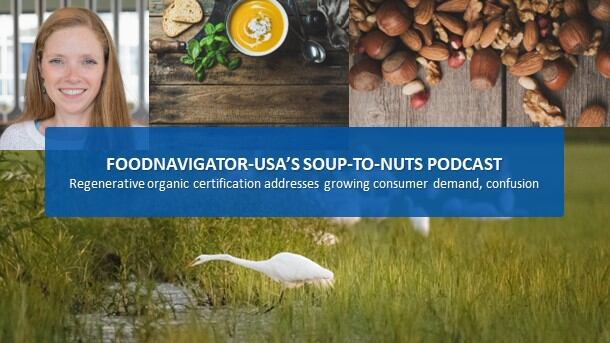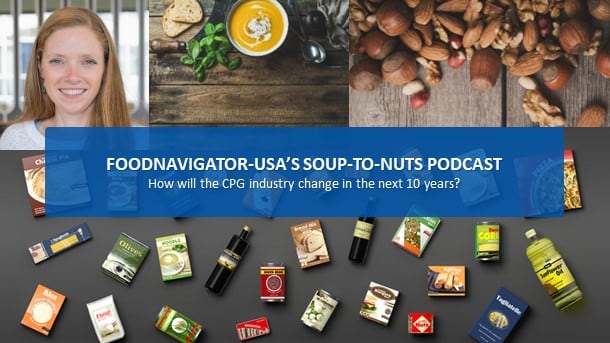To address concerns before they develop into full blown challenges that could stunt product development and industry growth, nine companies that rely on the technology have come together to form the Precision Fermentation Alliance.
In this episode of FoodNavigator-USA’s Soup-To-Nuts podcast, PFA Chair Nicki Briggs of the animal-free dairy company Perfect Day and Vice Chair Irina Gerry of Change Foods discuss the new ways companies are using precision fermentation to reinforce and reimagine the food system. They also share how the trade group is pre-emptively tackling challenges, establishing best practices and developing market access by engaging with regulators and unlocking funding.
[Editor’s Note: Never miss an episode of FoodNavigator-USA’s Soup-To-Nuts podcast – subscribe today.]
New uses for precision fermentation thrust well-established tech in spotlight
An updated twist on the centuries-old technique of fermentation, precision fermentation is the use of genetically-modified yeast and other microorganisms that are later removed from final products to convert minerals or plant-matter into “true to nature” ingredients.
And while precision technology has been used by food scientists for decades to create many common products, including vitamins, processing ingredients, sweeteners and flavors, new uses are grabbing headlines, which in turn is piquing consumer curiosity and could lead to stepped-up regulatory and legislative oversight.
“When you talk about the ingredients that have already been made with precision fermentation, those were either … processing aids – so non-animal rennet used in 90% of cheese… not necessarily the key ingredient,” and so there wasn’t much fanfare or desire to talk about the technology, Gerry said.
Now, though, companies are using the technology to create high-value macronutrients, including proteins, carbohydrates and lipids that can deliver the same nutrition and protein quality as animal-based foods, but minus the animals – and that is a story that manufacturers want to tell, she added.
She explained many of the benefits of precision fermentation are the value-added callouts consumers increasingly look for, including more sustainable and positive animal welfare messages.
“The difference really is not the technology. The difference is really in our desire to message the benefits to consumers that’s driving this change,” she said.
Addressing skepticim before it spirals
With this messaging, Gerry adds, “comes a little bit of skepticism” around an unfamiliar technology and questions about whether it is safe or will have unintended consequences.
But this skepticism isn’t necessarily bad, notes Briggs. She explains it is prompting the industry to be more transparent and explain early what precision fermentation is, how it works, and its benefits, including meeting basic needs of taste and safety, but also additional value like sustainability.
“Have to really communicate what this and how it is made, it only helps all of us, right? It only elevates this emerging industry,” she said.
She adds that awareness and adoption of precision fermentation is still relatively low, but growing quickly, and clear communication from the start will help the technology avoid some of the missteps and misunderstandings that other food-tech, such as GMO, have suffered.
Gerry also notes how PFA and companies using precision fermentation describe the technology will depend on who they are talking to, if they are a consumer or another stakeholder in the food system and what their goals are.
But a common and helpful theme on which PFA will focus first is how this technology isn’t new, but has been used safely for decades, which Gerry says is “very disarming for people because then they feel that there is already a connection, there’s a presence and there is the safety record.
Limited manufacturing capacity is early challenge
As PFA and others continue to innovate with precision fermentation and drive consumer demand, it also must build out manufacturing capacity, which Briggs explains is currently insufficient.
“One of the core challenges for this industry is and will continue to be manufacturing capacity, because that infrastructure just doesn’t exist, especially in the United States. So, I thin there will be numerous initiatives, whether its around internal knowledge sharing and resource sharing, versus banding together and really working collaboratively to come up with recommendations and guardrails for how the federal government and state governments can continue to invest in the building of this infrastructure,” she said.
Shaping regulatory oversight
A key part of scaling precision fermentation will be ensuring and communicating its safety to consumers, which Gerry says will require close coordination with regulators.
“There is an inherent neophobia when it comes food, whether it is technology or different food experiences,” and having clear regulations – especially around safety – that if met will earn validation by the government can go a long way in reassuring and winning over new consumers, Gerry said.
She adds PFA also will look to streamline and standardize adjacent regulations, which currently vary significantly across markets. For example, how the European Union manages genetically modified ingredients is different than in the US and considering the genetically modified microflora in precision fermentation are filtered out and not in the final product, it is unclear how the EU’s processes will apply, Gerry said.
Similarly, how the foods are labeled will also impact consumers’ ability to understand what they are and the benefits they offer, she said.
PFA stakes a broad tent for membership
Just a few weeks old, PFA also has a lot internal work ahead to ensure the new trade group fairly represents and welcomes stakeholders from across the value chain. To that end, Briggs and Gerry say the group will share more details about membership and tiered involvement in the coming weeks on its website PFalliance.org, where listeners can also find an email address to express interest or ask questions.




